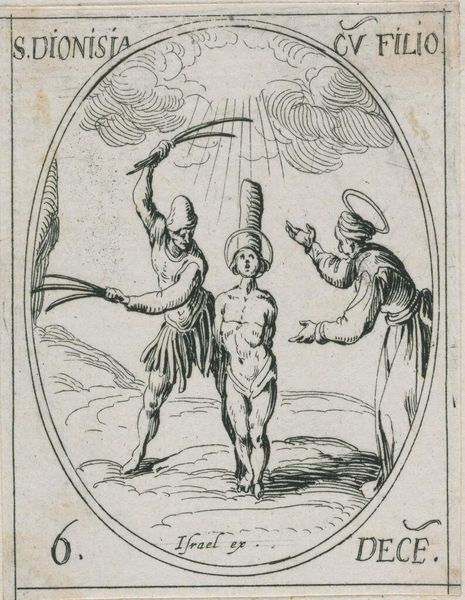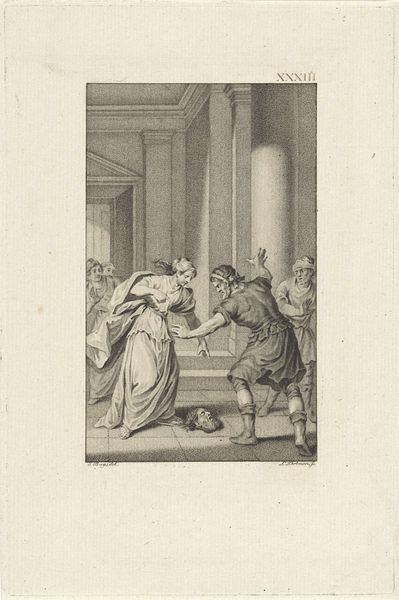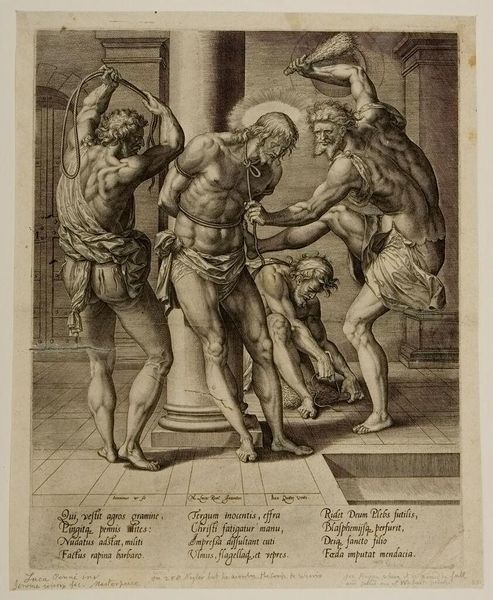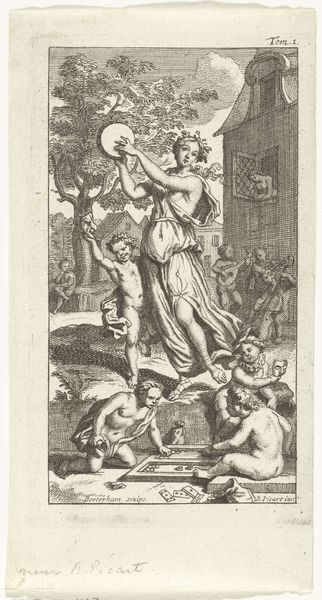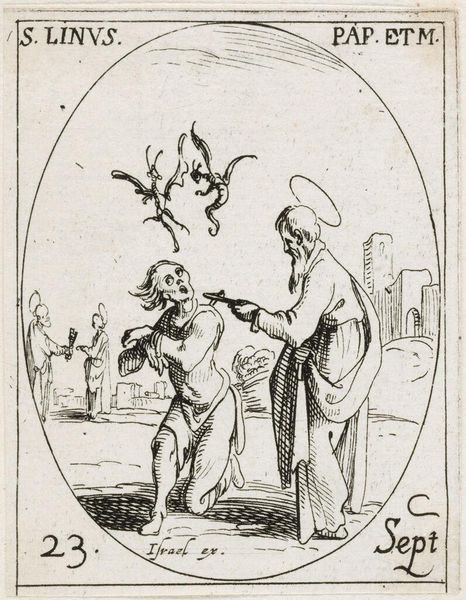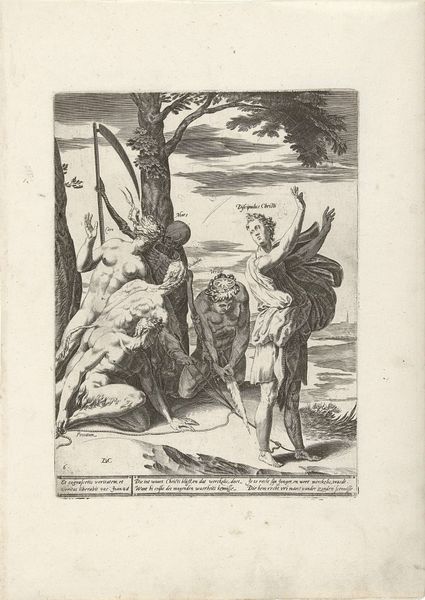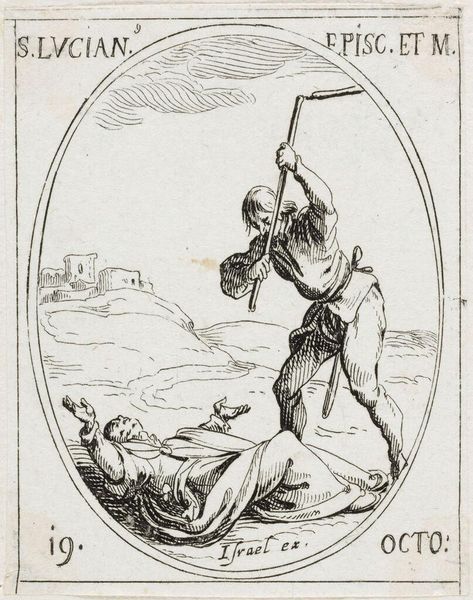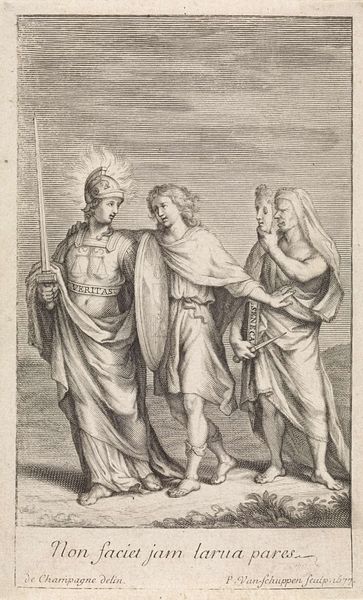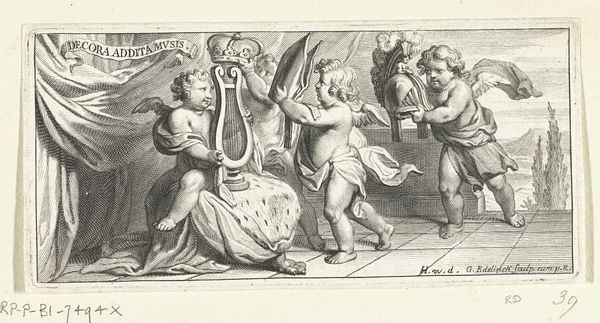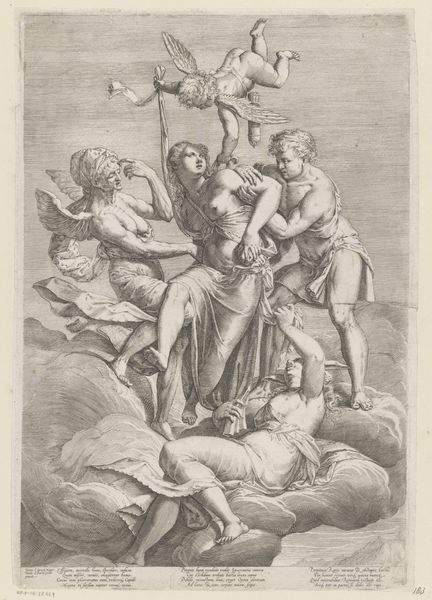
print, engraving
#
baroque
# print
#
figuration
#
history-painting
#
engraving
Dimensions: height 159 mm, width 95 mm
Copyright: Rijks Museum: Open Domain
Editor: This engraving from 1713 by Jacobus Schijnvoet, titled "Vrouwen aanbidden het beeld van Priapus," currently held at the Rijksmuseum, is fascinating. The composition is very stark, but what I find most interesting is the use of line and form to create such defined figures. How would you interpret the artist's choices from a formal perspective? Curator: From a purely formal standpoint, observe the meticulous use of hatching and cross-hatching, which builds up tonal values and defines the sculptural form of the figures and the statue itself. The linearity lends a neoclassical quality despite its Baroque origins. Note also the positioning: the triangular arrangement focusing upwards towards the statue's head forces your eye along that vector. It begs the question, how does this geometry reflect a deliberate emphasis? Editor: The geometry certainly creates a hierarchy, directing my gaze toward the bust of Priapus. Is that the extent of the visual dynamics? Curator: Not entirely. Examine the contrast between the rigid, almost architectural lines of the pedestal and the softer drapery of the women's clothing. This contrast introduces a tension—a visual dialogue—between the idealized, static representation of the deity and the more dynamic, fluid representation of mortal worshippers. Editor: So, you’re saying the lines and shapes create an interaction between the mortal and immortal realms in this piece? Curator: Precisely. Further analysis might delve into the symbolic meaning attributed to line versus form and how that reflects 18th-century aesthetic values. Each deliberate choice of line contributes to the overarching narrative structure. What has this close consideration unveiled to you? Editor: I hadn't considered the interaction caused by the linear definition and how the defined nature of certain components shapes the viewer's experience. I definitely have a new appreciation for linear contrasts now.
Comments
No comments
Be the first to comment and join the conversation on the ultimate creative platform.
